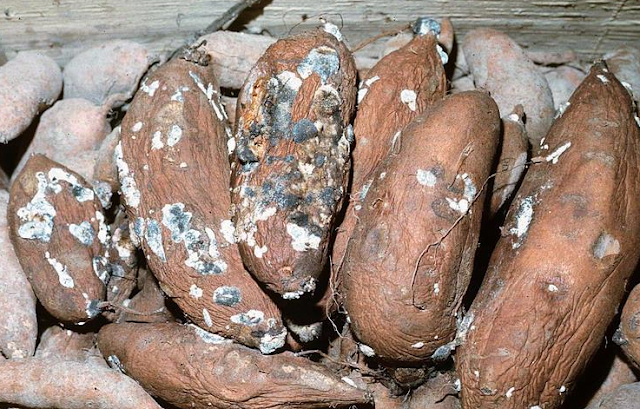Rhizopus root rot is a fungal disease that affects sweet potato plants, causing root rot and reducing crop yields. It is caused by the fungus Rhizopus stolonifer, which infects the roots of sweet potato plants and spreads throughout the plant, leading to wilting, yellowing, and death. In this blog post, we'll explore the biology of rhizopus root rot and discuss some of the strategies that can be used to control this disease.
Rhizopus root rot is a major problem for sweet potato farmers, as it can cause significant losses in yield and reduce the quality of the crop. The fungus that causes this disease is found in soil and can survive for many years, and it is spread through contaminated soil and water. Once it is established in a field, it can be difficult to control.
To control rhizopus root rot, it is important to take a preventative approach and focus on reducing the spread of the fungus. This may include the use of resistant varieties of sweet potatoes, crop rotation, and the use of sterilized soil and equipment. In addition, the use of chemical controls such as fungicides may be necessary to suppress the fungus and reduce the impact of the disease.
By understanding the biology of rhizopus root rot and the strategies that can be used to control this disease, sweet potato farmers can take steps to protect their crops and reduce the impact of this devastating disease.
Keywords: rhizopus root rot, sweet potato, plant disease, fungus, Rhizopus stolonifer, root rot, crop yield, soil-borne, wilting, yellowing, crop rotation, soil sterilization, chemical controls, fungicides, plant disease management.

